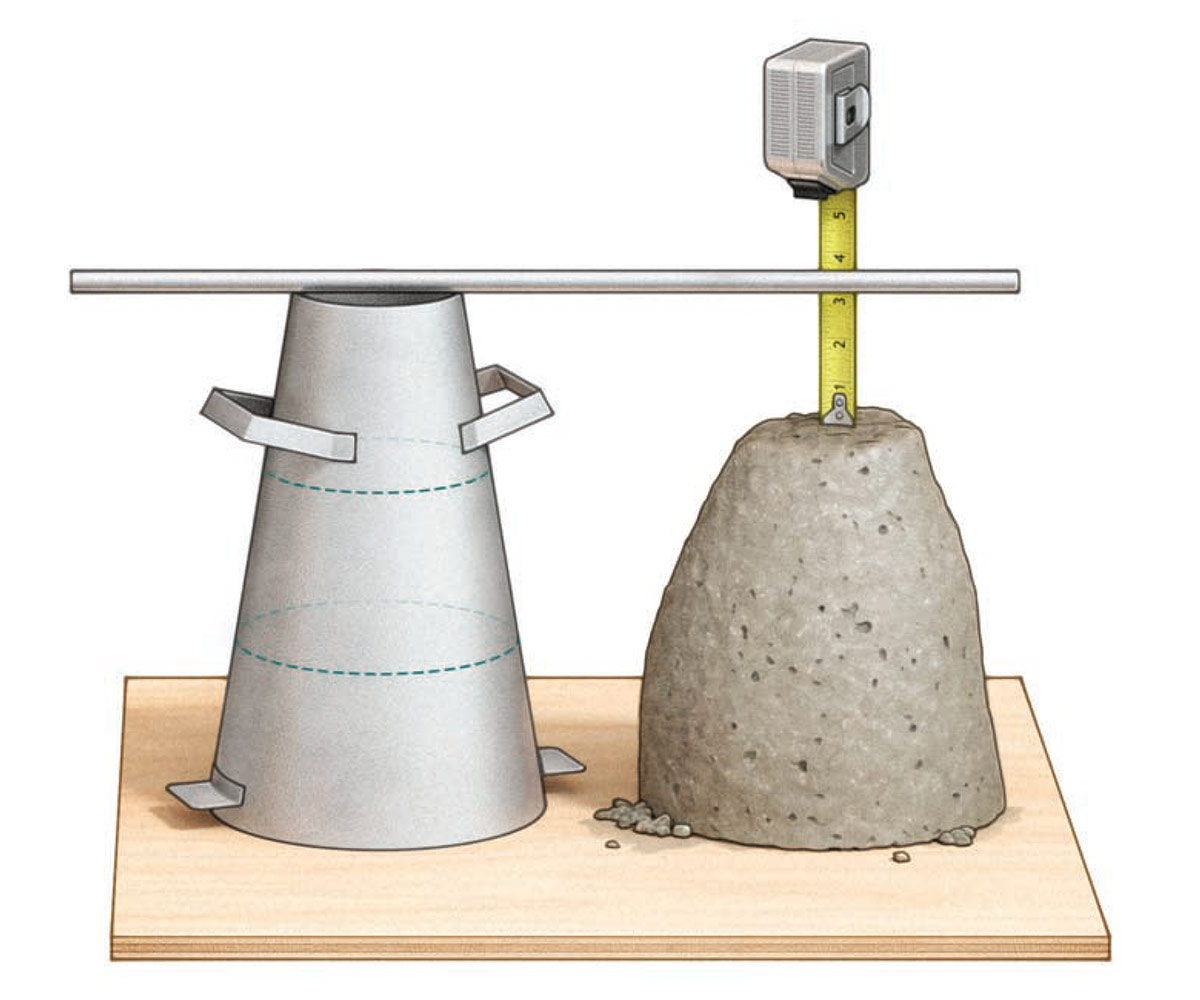How to Pour Concrete on a Slope
Use a low-slump concrete when pouring a walkway that slopes downhill.

I’ve done a bit of concrete flatwork—stairs, stair landings for decks, some slabs, and so forth—but now I have a client asking for a concrete walkway in front of his house and one section of it, say about 10 ft. long, slopes downhill. It’s not super steep, but it did make me wonder if there’s anything I need to know about ordering, pouring, and finishing concrete on a slope. I have visions of the wet concrete all slumping at the bottom and hardening in a giant lump.
—Jason, via email
John Carroll, a mason in North Carolina, replies: The answer to your question can be found in the question itself. You’re worried about the wet concrete slumping downhill along the slope, so the best way to avoid this is to order low-slump concrete, which is concrete with a low proportion of water.
“Slump” is a term used to describe the consistency of the mix. In commercial work, a simple slump test of the concrete is often required in the field during the concrete pour. In this test, a 12-in.-tall steel cone is filled according to strict specifications. The steel is then slowly removed and the amount that the resulting cone of wet concrete settles, or slumps, is measured with a ruler. For example, if the concrete mixture settles 3 in., then it is said to have a 3-in. slump, or sometimes just a slump of 3. The stiffer (drier) the mixture, the lower the slump. The looser (wetter) the mixture, the higher the slump.

You don’t need to do a slump test for your project, but you can use the term to describe the mix you need when ordering. For a mild slope, such as the 1-in-20 slope required for a wheelchair ramp, a 3-in. slump will work. For steeper slopes, you will have to go to a 1-in. or 2-in. slump. If you aren’t sure, just describe the job to the concrete dispatcher, and they will tell you what slump to use.
From a structural standpoint, low-slump concrete is good. But it is hard to work with. Since it doesn’t flow, you need plenty of hands available to move it into position in front of the screed. And you need to float the stones down beneath the surface of the wet mix just after you place and screed it.
Drawings: Christopher Mills





